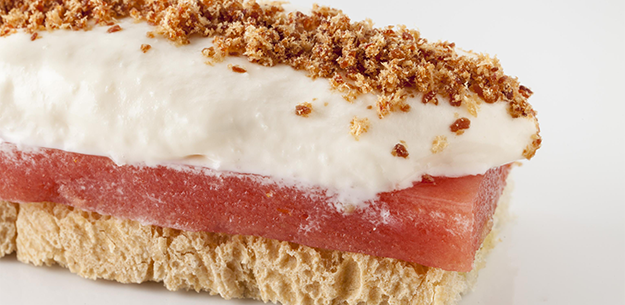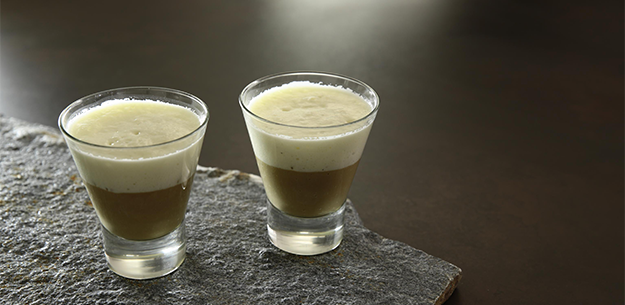.png.transform/rendition-xs/image_image%20(1).png)
Air
Ferran Adrià's amazing technique to create air (or foams) revolutionized the world of gastronomy in 1994. The brilliant Spanish chef confesses that the inspiration for broadening the horizons of this new concept based on mousse came to him while he was contemplating the fruit juice he had just ordered in a café.
From that moment, he had a clear objective in mind: get rid of the cream, eggs and any other product traditionally used for making mousse that could mask the flavor of the basic ingredient. This drove Adrià to carry out non-stop research with all kinds of substances, applying pressurized air until he hit on the ideal tool for making air or foam: the siphon.
Culinary airs or foams can be cold or hot, sweet or savory, and their versatility has mean they are used in a huge variety of recipes and foods. The range of possibilities is practically infinite, as temperature can be combined with the flavor and with the base, which might be gelatin, fat, egg white or starch.
What are the benefits?
When air is pumped into dairy or egg substitutes, the foams are lighter and can intensify the flavor of the product used as a base. It can also be stored for longer than traditional mousse as the siphon is hermetically sealed, so it does not absorb smells or flavors from other foods.
It can be used to produce highly elaborate and original dishes, involving foams with all kinds of textures, aromas and colors, something that was impossible to achieve in the past. Depending on the chosen formula and the resting time, the density can be varied, producing thick foams with mousse textures, fluid like cream or liquid like sauces.
What utensils are needed?
To make culinary foams you need natural ingredients, air and a special siphon, consisting of a specially adapted whipped cream canister to which compressed air cartridges are added.
The siphon is filled with purée or gelled juice made from the chosen product, the air cartridge is charged, the canister is shaken and then left to rest in the fridge or in a water bath (bain marie) and the foam is ready to be used when needed.
Depending on what you want to use the foam for, or how you want to decorate your dish, you can fit various kinds of attachments to the siphon, to make smooth or ridged patterns.
What uses does it have?
Although this technique is mainly used for vegetables, fruits, herbs and spices, the truth is that any kind of food can be transformed to create an endless range of foams to use for appetizers, desserts or as side dishes or garnishes for main courses. Foams are also used to give other dishes such as meringues and creams a lighter texture.
Paco Roncero is head chef of La Terraza del Casino restaurant (Madrid)


- Foams 1
- Foams 2
